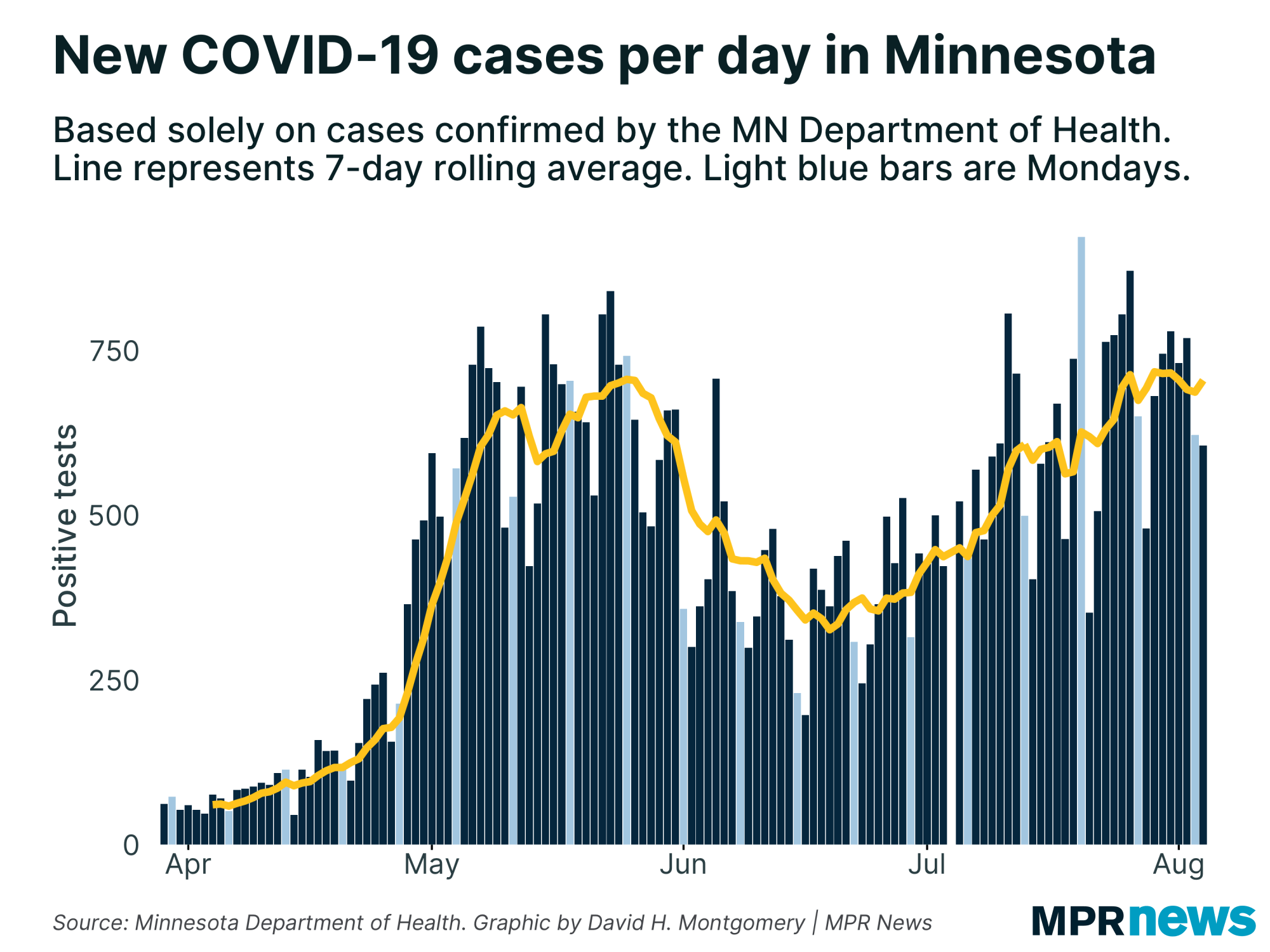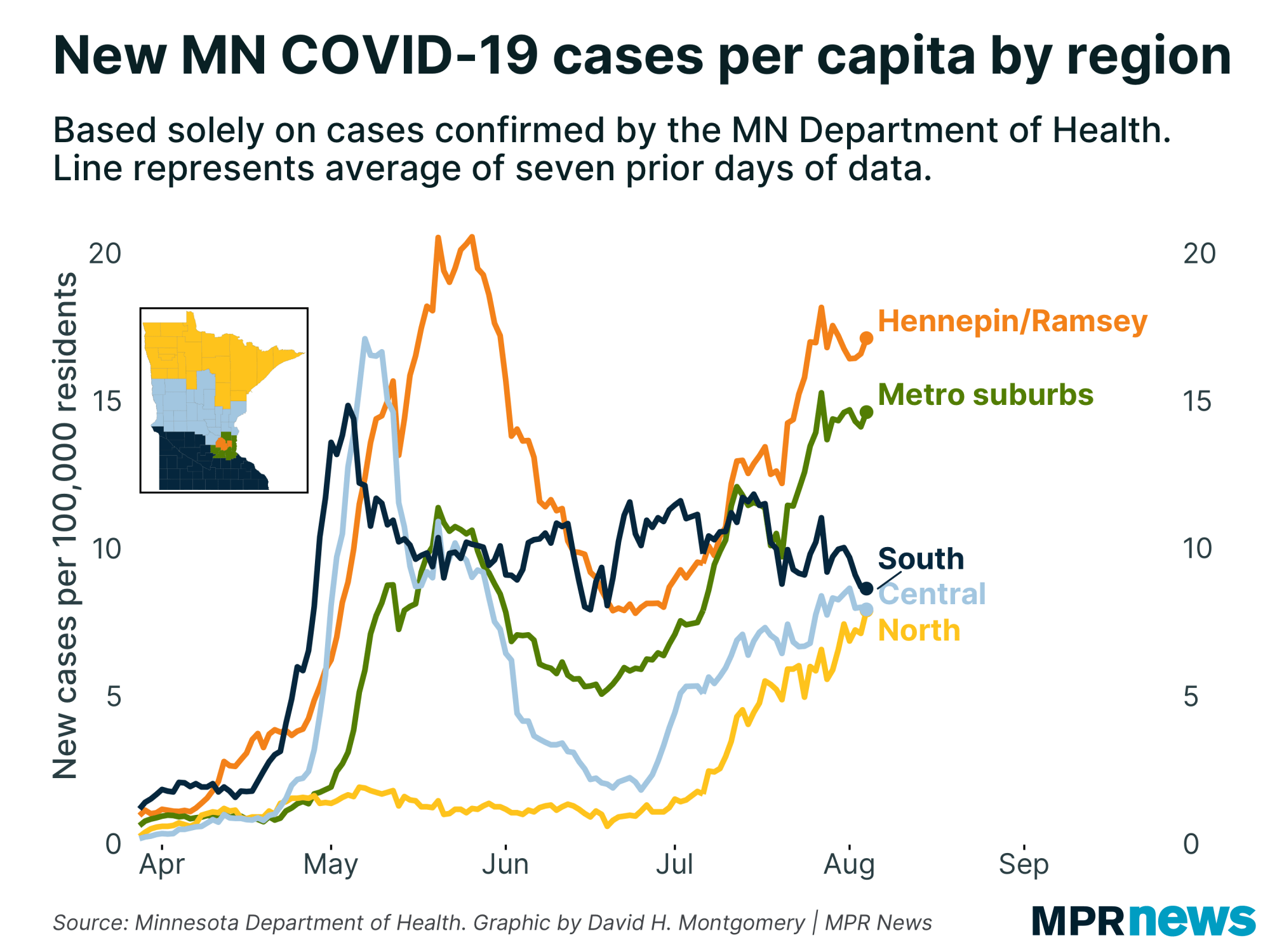Latest on COVID-19 in MN: Yes to flu shots, no to Sturgis?
Minnesota’s health commissioner wants Minnesotans to make sure their vaccinations, especially for the flu, are up to date to make it easier to battle COVID-19 this fall.
She’s also cautioning that the Sturgis, S.D., motorcycle rally that starts Friday is “ripe” for COVID-19 spread.
Commissioner Jan Malcolm on Wednesday called on people to make sure they and any children in their care get flu shots. She noted that vaccinations among kids had dropped during the COVID-19 outbreak, although the situation has improved recently.
“It’s going to be so critical for Minnesotans to get their flu shots this fall” so that the health care system isn’t overwhelmed by flu and “what we expect to be additional cases of COVID-19 this fall,” she added.
Officials have been increasingly concerned about a one-two punch of COVID-19 and the flu this fall. Moves starting in late March to shut down businesses, restaurants and retail establishments to fight COVID-19 spread also short-circuited the spring flu season.
Overall, Minnesota’s COVID-19 data on Wednesday offered a mixed bag of hopeful and concerning news. The numbers showed daily deaths remain in the single digits, with the number of people currently hospitalized dipping after trending up for weeks.
Here are the latest coronavirus statistics in Minnesota:
-
57,779 cases confirmed (629 new) via 1,090,303 tests
-
1,629 deaths (nine new)
-
5,373 cases requiring hospitalization
-
305 people remain hospitalized; 152 in intensive care
-
51,223 patients no longer needing isolation
While current hospitalizations remain far lower than their late-May peak, they’ve shown an upward swing the past few weeks even as the daily growth in new cases flattened.

Current COVID-19 hospitalizations in Minnesota.
David H. Montgomery | MPR News
Among the 1,629 Minnesotans who’ve died, about 76 percent had been living in long-term care or assisted living facilities; nearly all had underlying health problems.
Of the 57,779 confirmed cases since the pandemic began, about 89 percent of those infected have recovered to the point they no longer need to be isolated.
Sturgis a ‘pretty ripe environment’ for spread
Malcolm and other state public health leaders have warned that the upcoming Sturgis motorcycle rally in South Dakota could be a potential petri dish for spreading the virus here and across the nation.
The nine-day event is expected to attract more than 250,000 riders and their friends from around the country to the Black Hills, leading Minnesota health leaders to worry about the disease making its way back here.
Malcolm on Wednesday reiterated those concerns, saying she was disappointed South Dakota had OK’d the Sturgis rally this year given that the state is seeing a significant surge in cases and the rally would be attracting people from around the country, including places where COVID-19 cases are climbing.
The Sturgis rally, she said, will be a “pretty ripe environment for further spread.”
The length of the rally from Friday through Aug. 16, will mean prolonged exposure for many, and the long-distance travel by many riders means they may carry the virus home and touch off other outbreaks, Michael Osterholm, head of the Center for Infectious Disease Research and Policy at the University of Minnesota, told MPR News Monday.
“Come mid-August to late August, early September,” Osterholm said, “Sturgis will have one hell of an imprint on this country.”
Malcolm on Wednesday said those headed for Sturgis should watch for symptoms and perhaps even get tested for COVID-19 a week after coming home, even if they aren’t symptomatic.
Also self-quarantining for 14 days, she added, would be a “really prudent and really thoughtful thing to do.”

Cases bubble across age brackets, up north
Worries remain about the growth of COVID-19 among younger Minnesotans, including that those infected will inadvertently spread the virus to grandparents and other more vulnerable people.
“Consider all the roles you play” in all daily interactions, Kris Ehresmann, the state’s infectious disease director, cautioned last week. People who might not worry about themselves should worry about infecting vulnerable family members and coworkers, she added.
Minnesotans in their 20s now make up the age group with the most confirmed cases in the pandemic — nearly 13,500.

The median age of Minnesotans infected has been trending down in recent weeks and is now 36 years old.
Regionally, the Twin Cities and its suburbs have been driving the newly reported cases.
The seven-county Twin Cities metro area represents more than two-thirds of new COVID-19 cases in Minnesota and has accounted for a disproportionate share of the state’s cases since mid-May when southern Minnesota’s meatpacking hot spots were surging.
But the disease is present in all parts of the state, including the north, which had largely avoided the outbreak until recently.

Northern Minnesota is now seeing about the same number of new cases per capita as hard-hit southern Minnesota.
Cases in Beltrami County, home to Bemidji, have more than doubled in the past two weeks, increasing to 207 as of Wednesday. Most of the counties seeing a jump in case growth relative to their population are in northern and central Minnesota.

Meatpacking operations had been hot spots for big outbreaks in southwest, west-central and central Minnesota earlier in the pandemic, but new cases have slowed considerably in recent weeks.
The case increases the past few week in Minnesota have caught the attention of the nation’s top infectious disease expert, Dr. Anthony Fauci, who in a Monday interview with the Journal of the American Medical Association named Minnesota among a handful of states that should reconsider reimposing some restrictions given the trends.
Top headlines
After taking tough measures, Fond du Lac band has first COVID-19 cases: After months of trying to keep the coronavirus at bay, the Fond du Lac Band of Lake Superior Chippewa has confirmed the first two positive COVID-19 cases on its reservation in northeastern Minnesota.
Duluth schools recommend combination of in-person and distance learning: Duluth Superintendent John Magas recommended that students in K-5 elementary schools start the school year in the classroom, with students in middle and high schools beginning the year under a hybrid model: in class one day a week, virtual learning four days a week.
During COVID-19, a growing interest in recycling food waste at home: With interest in organics recycling programs growing, the pandemic has highlighted Minnesota’s need for more compost sites to handle food waste.
Lawsuit challenges Minnesota’s mask mandate: A lawsuit filed Tuesday in federal court is challenging the constitutionality of Minnesota’s mask mandate. A group of Republican lawmakers and voters, including the watchdog group Minnesota Voters Alliance, is suing Gov. Tim Walz, Attorney General Keith Ellison and other officials. They want the mask requirement halted ahead of next week’s primary election.
COVID-19 in Minnesota
Data in these graphs are based off Minnesota Department of Health cumulative totals released at 11 a.m. daily. You can find more detailed statistics on COVID-19 at the Health Department website.
The coronavirus is transmitted through respiratory droplets, coughs and sneezes, similar to the way the flu can spread.




